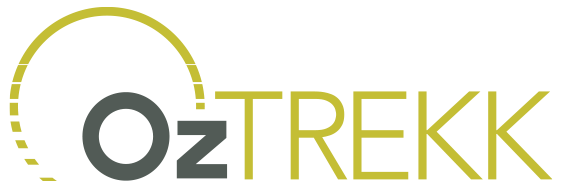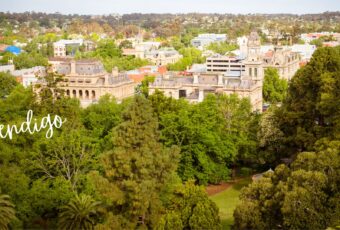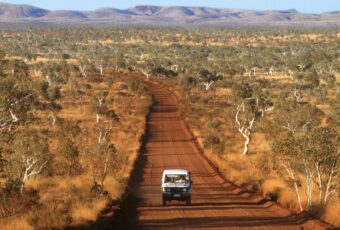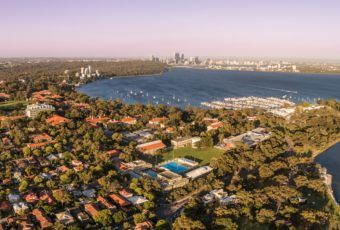Overview
Wondering how to apply to an Australian veterinary program? Look no further. We’ll guide you through the process, step by step.
Here’s what you’ll find on this page:
- Determining Your Eligibility
- Understanding Financing
- Starting Your Application
- How to Submit Documents
- OzTREKK Submits Your Complete Application(s)
- FAQs
If you have questions or concerns at any stage in the process, we are just a call or an email away!
1. Eligibility
Determining Your Eligibility
Have you met the minimum GPA requirement? Do you have all the prerequisites?
Figuring out if you’re eligible to apply to a program is a great first step. Eligibility is based on several factors and can differ across universities. To get started, have a look at the following resources:
- Review the Admissions Requirements for each program
- Use our Compare Programs tool
- Check out the GPA Conversions page
- Book a chat with us
Minimum vs Competitive
Even if you meet the minimum requirements, it doesn’t always mean you’ll be a competitive applicant.
Minimum GPA/admissions test scores are defined by each university and are the lowest scores required to be eligible to apply.
Competitive GPA/admissions test scores are the minimum scores that receive an offer and can vary year to year.
We’ll always be transparent about your chances of receiving an offer. Not competitive? We’ll help you figure out your options. Sometimes applicants decide to pursue a different study area—we can help with that, too! Check out our helpful FAQs for more insight on eligibility.
2. Understanding Financing
Financing Your Studies
It’s no secret that studying internationally is expensive, that’s why it’s important to determine if you are financially equipped to study veterinary medicine in Australia.
The major source of funding for a Canadian studying veterinary medicine in Australia would be through a professional line of credit with a major Canadian bank, roughly $80,000 to $200,000. Veterinary medicine programs in Australia can cost upward of $290,000, plus approximately AUD$25,000 to AUD$35,000 a year in living costs.
Although funding is available for veterinary medicine students, the amount offered from major lenders is often not enough to cover all costs. Additional funding is often required (e.g., personal finances).
With this in mind, we ask that you consider financing early in this process and plan ahead. Check out our Financing page to learn more. Feel free to reach out to us if you’d like to chat about finances.
3. Apply Online
Start Your Application
Fill out the OzTREKK application. This application only comes to us, so don’t worry about making a mistake.
Completing your OzTREKK application early is a great way for us to get to know you and your goals, and it ensures you don’t miss a deadline!
What to Expect on the Application
The basics: your full name, address, program of interest, etc., plus your education history.
Once you’ve pressed “Submit,” congratulations! You’re officially an OzTREKK student! We’ll send you a confirmation email and let you know what else is required to complete your university application.
If you’d like to make changes to your application or to your program selection, no problem. We can adjust anything as we go.
4. Submit Documents
Submit Your Documents to OzTREKK
You’ve pressed “Submit” on your OzTREKK application and you’re ready for the next step.
Upload Your Documents to the myOzTREKK Portal
You’ll receive an email with your log-in credentials. Once you’re set up, you can begin uploading your application documents (except transcripts) to the myOzTREKK student portal. We only need one copy of each document.
The myOzTREKK portal is where you’ll be able to keep track of your applications:
- Manage your applications (see where you’ve applied or cancel applications)
- Upload documents like your passport and résumé
- Review your files and education history (make sure everything looks right!)
- Submit questions to your admissions team
When Should I Send My Documents?
The earlier the better! We’ll need all your documents before the application deadlines; the earlier we have them, the more guidance we can provide.
Remember, we’re here for you throughout the entire process, so always feel free to ask us questions.
5. OzTREKK Submits Application
OzTREKK Submits Your Complete Application(s)
Once all your documents are in, we’ll submit your application to the university and send you a confirmation email with estimated outcome dates.
This is the waiting period. It can be stressful, but now that your application is under assessment, we’ll share everything you need to know in this “layover” phase:
- Resources for confident decision-making if you receive an offer (or multiple offers!)
- Financing information (including contacts)
- Community connections (OzTREKK events and more!)
FAQs
If you don’t find the answer you’re looking for, please contact us. We’re here to help!
Can my partner or family come to Australia with me if I get an offer?
Many Canadians wish to fulfill their career goals after getting married, having kids, or both! We’ve had plenty of students who have taken their partner and/or children with them.
If you want to take your partner or family with you, you’ll need to add them as a secondary applicant or dependents to your student visa application. Even if you don’t plan on taking them with you, we suggest you add them to your application anyway because it can be complex, expensive, and time-consuming to add them afterwards. You’ll then need to provide additional documentation to support your claims of a relationship or your children’s dependency status.
In addition to looking after the visa, you’ll also need to ensure they’re included on your Overseas Student Health Cover (OSHC), you have appropriate accommodation, and if you’re bringing children, you’ll need to enroll them in school.
Visit our Health Insurance page for more information.
When should I apply?
We recommend you begin your OzTREKK application about a year before your program would start. Most programs in Australia start between January and March, so that means you would start your OzTREKK application between January and March the year prior. Some programs also have intakes in June/July and September/October/November.
Here’s how the typical “cycle” works if your program starts January – March:
October – May: You gather all required documents like passport photo page, transcripts, résumé, personal statement, and send them to our office. Don’t worry, we’ll tell you exactly what we need!
June – August: Interviews (if your program requires one)
September – December: Offer time! If you get an offer, we’ll walk you through the acceptance (or decline) process and give you all the help you need to get ready to go.
January – March: Time to head Down Under!
Can I apply if I’m only 17?
Yes, but you’ll require parental or guardian consent (signature). OzTREKK will provide the necessary documentation for this signature.
If you won’t be 18 when your program starts, you’ll be required to show that you’ll be living with an approved guardian until you turn 18. If you don’t have an approved guardian in Australia, you may need a family member to apply for a guardian visa to accompany you. This guardian visa should be obtained as part of the student visa application
Can my entire application be submitted through OzTREKK?
Absolutely. We manage and submit your application(s) on your behalf and communicate any updates from the universities.
Applying to an Australian or New Zealand university starts by filling out our OzTREKK application: You’ll tell us a bit about yourself, like your name, address, date of birth, education history, and what schools you want to apply to!
When you click “Submit,” the application with all your information only comes to us, so there’s no need to worry about making a mistake at this stage. We then create a file for you (based on your name, not a number!) and email you a list of documents required to complete your application—things like passport photo page, transcripts, résumé, personal statement—but it depends on the program, as some programs require more paperwork than others.
If you get an offer, we’ll help you with that part, too! Whether you want to accept or decline, we’ll help you figure out your next steps. If you accept your offer, we’ll even help you get ready to go. We’re here to be an advocate for you, and to walk you through the entire process from start to finish.
Should you have any questions along the way, just send us an email or book a chat. That’s why we’re here!
Are there any scholarships for international students?
Scholarship options in Australia are usually limited for international students as they tend to be reserved for those undertaking postgraduate research degrees; however, we can advise you where to look and whether specific programs have a history of offering scholarships.
Occasionally, scholarships are granted to high achievers—those with very high marks. In previous years, we have seen $5000- to $10,000-scholarships given to OzTREKK students.
Check out OzTREKK’s Financing page to learn more about scholarships and paying for your degree.
Do you have course outlines on file?
Before sending us outlines, check to see if we’ve already got them. We can save you a lot of time and ensure we’re submitting good outlines on your behalf. Outlines must be within 2 years of the time you took the course (as listed on your transcript).
I received a low mark on my prerequisite course. Will this impact my application?
To meet the prerequisite subjects, you need to have been granted the credit (passed); the grade isn’t considered in the prerequisite assessment.
What does “rolling admissions” mean?
Rolling admissions means the university assesses applications as they are received, or on a “first come, first served” basis. As soon as they’ve met the quota and the program is filled, they close the applications. So, for a program that has rolling admissions, the earlier you apply the better!
How does OzTREKK know if my application will be competitive?
The majority of Canadians applying to full-degree programs in Australia (i.e., not study abroad courses, which usually only last a semester or two) apply through OzTREKK. They’re studying medicine, dentistry, law, physiotherapy, occupational therapy, etc.
Since they’re using OzTREKK’s services, this gives us a good idea of the starting point of a competitive application each year, allowing us to help you determine which universities/programs are most likely to present you with a letter of offer!
You can get started on determining your chances by reviewing the admissions requirements on each program page. Then, visit our GPA Conversions and Eligibility pages for details and suggestions to help you get into the program of your dreams. Of course, OzTREKK is always here to help if you have questions.
What is a 5.0 GPA in Australia?
Unlike in Canada, GPAs in Australia are simple. They are standardized, so they mean the same thing to everyone.
In Australia, a 5.0 / 7.0 would roughly translate to a 2.7 / 4.0 or approximately 70% – 72%, but keep in mind all universities assess slightly differently.
Learn more on our GPA Conversions page where we list the most common Canadian GPA scales to their corresponding Australian GPA grade.
Which prerequisites do I need?
Prerequisite courses vary by university and by program. We’ve listed university- and program-specific requirements on each program’s page under “Admissions Requirements.”
How do universities calculate GPA?
Calculations differ by university, but most use cumulative (all units within a program) or weighted GPA (typically last 2 or 3 years of study). See GPA Calculations for more information.
What is a “school leaver”?
“School leaver” is a term used by Australians (and those in the UK) that refers to someone who has graduated high school.
Australia offers professional undergraduate programs—like medicine or veterinary science—that may require an applicant to apply straight from high school without having any post-secondary education. In their admissions requirements, you may see “open to school leavers only,” so anyone who has post-secondary studies (completed or not), aren’t eligible to apply.
If you’re not sure if you qualify for a program, reach out! Contact us at info@oztrekk.com.
What is an “official” transcript?
An official transcript is one that is
- emailed directly from your university to OzTREKK via an official transcript service like Parchment or MyCreds; or
- mailed directly from your university to OzTREKK.
To process your application(s), universities require your transcripts to be certified, which we do on your behalf.
What are the average marks for entry into a vet program?
Most undergrad-entry eligible candidates have a high school diploma with an overall average of approximately 85% – 88%. If applying with some university studies to The University of Queensland, an average of 75% or above is required. For graduate-entry DVM programs, a 77%+ is generally eligible for The University of Melbourne, and a 90%+ for The University of Sydney.
Keep in mind entry is competitive and meeting minimum GPA requirements does not guarantee entry.
When are the application deadlines?
Variable; however, candidates are encouraged to apply as early as possible before the deadline. Most OzTREKK students begin their applications in January / February for the following February / March start date.
What if my degree is more than 10 years old?
For competitive programs, many universities will only accept applications from students who have studied within the last 10 years. Universities want to make sure the knowledge that students have is still relevant and that students are prepared to take on additional studies. If you’ve studied more than 10 years ago, consider the following options:
1. Complete another degree
If you haven’t completed a degree within the last 10 years and your program of choice requires it, you’ll need to complete another degree. For some universities, this may mean you can complete a master’s (or bachelor’s) degree in Canada and then apply again.
University of Sydney DVM – You must be able to provide evidence that you’ve passed the prerequisite subjects with at least credit average by showing the official transcript with final mark. There is some flexibility for applicants who have stayed in scientific academia.
University of Melbourne DVM – If you graduated more than 10 years ago, you’ll be required to demonstrate your capacity for continued study. Typically, this would mean demonstrating that your knowledge of the prerequisite subjects is still current by having achieved a mark of at least 70% in each of those subjects within the last three years.
University of Queensland BVSc – Qualifications completed more than 10 years ago may be considered as basis for admission to undergraduate or postgraduate programs; however, credit will not be granted for studies completed more than 10 years ago.
2. Complete additional studies and re-apply
University of Sydney DVM
Must complete another degree – Where there are more than one completed degrees, the best GPA will be used. GPA is calculated over the entire duration of the degree and all years of study are weighted equally. Results from completed honours and postgraduate coursework degrees are included in the GPA calculation. Incomplete degree results will not be included. The discipline of the degree is not considered during the ranking process.
University of Melbourne DVM
Complete additional upper-level science courses – The University of Melbourne will consider upper-year science subjects (300- and 400-level courses), rather than cumulative GPA. Melbourne weights their science GPA 75:25 toward the 400-level subjects, meaning your 400-level courses are weighed 3 times as much as your 300 level. Subjects can be taken outside a degree (non-award) will be considered. Courses must be science subjects Melbourne defines a science subject as a subject dealing with the scientific basis of physical or biological sciences, but not including social sciences such as sociology, human behavior, history of science, economics, philosophy (including philosophy of science), and anthropology. This list is indicative and not comprehensive.
What if I don’t have a relevant degree?
The University of Melbourne DVM program requires applicants have a science degree with a majors in one of the following areas: agriculture, animal science, biochemistry, biomedicine, physiology, or zoology. If you don’t have an applicable degree, consider the following options:
1. Take science-related studies and re-apply
You may re-apply with either a master’s degree or after having completed upper-level science courses (if eligible). The University of Melbourne will consider upper-year science subjects (300- and 400-level courses), either at bachelor’s or master’s level. Subjects can be taken outside a degree (non-award studies).
Melbourne defines a science subject as a subject dealing with the scientific basis of physical or biological sciences, but not including social sciences such as sociology, human behavior, history of science, economics, philosophy (including philosophy of science), and anthropology. This list is indicative and not comprehensive.
2. Consider applying to a different program
If you’re interested in working with animals, but the other options won’t work for you, consider applying to a degree in veterinary technology, zoology, animal or environmental conservation, etc. instead, as long as your GPA meets the minimum requirements.
What if my GPA doesn’t meet the minimum or I’m not competitive?
If your GPA does not meet the minimum requirement for veterinary medicine, we’re not able to submit the application.
University of Melbourne DVM
Complete additional upper-level science courses – The University Melbourne will consider upper-year science subjects (300- and 400-level courses), rather than cumulative GPA. Melbourne weights their science GPA 75:25 toward the 400-level subjects, meaning your 400-level courses are weighed 3 times as much as your 300 level. Subjects can be taken outside a degree (non-award) will be considered. Courses must deal with the scientific basis of physical or biological sciences, but not including social sciences such as sociology, human behavior, history of science, economics, philosophy (including philosophy of science), and anthropology. This list is indicative and not comprehensive.
University of Sydney DVM
Must complete another degree – For the University of Sydney’s DVM program, where there are more than one completed bachelor’s degrees, the best GPA will be used. GPA is calculated over the entire duration of the degree and all years of study are weighted equally. Results from completed Honours and postgraduate coursework degrees are included in the GPA calculation. Incomplete degree results will not be included. The discipline of the degree is not considered during the ranking process.
Undergraduate veterinary degrees (Sydney BVB/DVM and UQ BVSc)
Take college/university studies – The GPA requirement is lower for applicants with a year of more of post-secondary studies (uni or college).
Consider another program
If you’re interested in working with animals, but the other options won’t work for you, consider completing a degree in veterinary technology, zoology, animal or environmental conservation, etc. instead, as long as your GPA meets the minimum requirements.
What if I didn’t pass the Casper SJT?
It’s uncommon for OzTREKK to see students not meet the Casper requirements for Sydney, UQ, and Melbourne veterinary schools.
If you failed to meet conditions of an offer due to the Casper situational judgement test, you’ll need to re-apply for next available intake, and you’ll be required to retake the test. Your application must be submitted to the university before you’ll be able to register for the test. Please read Applying to veterinary schools in Australia: What is the Casper test? for more information
































Ask A Question
Ask us about your program of interest, or if you have a question about our services.
CONTACT US TODAY